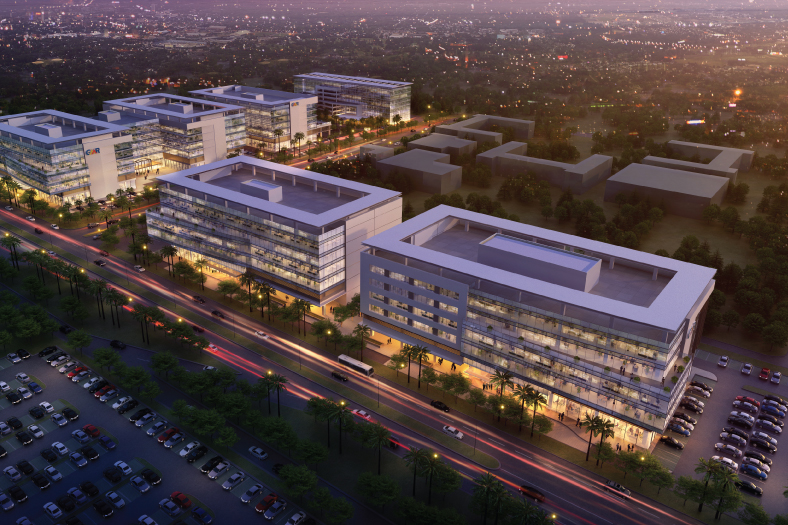“Creation of dense informal settlements within the city, impractical low cost housing at the exurbs or high-rising verticals are nothing but a manifestation of inevitable immigration of people from rural to urban areas. Thus, the time is right for Indian real estate to upscale itself for the coming decade in order to meet the challenges posed by this rapid urbanisation”- Anuj Puri, Chairman & Country Head, Jones Lang LaSalle India
UrbanisationIndia is rapidly urbanising, not only in form and features but from within. While the metropolises are observing a fast evolving skyline with tall skyscrapers and iconic architecture, the smaller towns and cities are witnessing an unprecedented metamorphosis of the surface through expansion of roads, flyovers and open areas. This change is not irrational exuberance, neither is it an insane explosion of anyone’s imagination. It is a necessity.
According to the United Nations, India has the highest rate of change of the urban population among the BRIC nations, which will remain above 2 per cent annually for the next three decades. At this rate, an estimated 854 million people will live in Indian cities by 2050, a figure which is the combined population of present day USA, Brazil, Russia, Japan and Germany. Even in the coming decade, India will add 95 million people to its already dense urban fabric, nearly one-fourth of its current urban population. India needs more cities, and it is a mere understatement to say that we might be misjudging the dimensions of the situation.
With a land area of one third the size of USA, India harbours nearly three times the population. Not surprisingly, Indian cities are not only the most populous but also among the densest urban agglomerations of the world, which poses unique challenges to the development of infrastructure and real estate. Creation of dense informal settlements within the city, impractical low cost housing at the exurbs or high-rising verticals are nothing but a manifestation of this inevitable immigration of people from rural to urban areas. Thus, the time is right for Indian real estate to upscale itself for the coming decade in order to meet the challenges posed by this rapid urbanisation.
Models of growthTo upscale its real estate, India needs to add more cities, while strengthening existing ones, with an effective urban planning strategy which is sympathetic to regional needs and considerations. Through the years, there have been several models for urban growth proposed and implemented globally, which can be adapted to the Indian context. The prominent one existing in India is the Multiple Nuclei or the polycentric model, which has been utilised in the Mumbai Metropolitan Region and National Capital Region of Delhi, Bangalore, Hyderabad and other metropolitan cities.
In this model, multiple growth nodes have been created in the form of satellite towns to reduce dependency on the central region and decongest the city. With rising urban density, compact city models or ‘smart growth’ with transit oriented development are required in several metropolitan cities, with a balance of adequate water, power, safety and transit infrastructure. The transect model of development is another relevant theory, which discourages long commutes and enables the growth of self-contained communities. In cities like Mumbai and Delhi, this concept is of course nothing more than science fiction at the moment. However, we are here to chart the forward course for real estate, and we must keep the bar of our aims and objectives as high as possible.
Affordable housing is a real problem in India, and the world is well aware of it. The income pyramid in India is heavy at the bottom, with over 60 per cent of the households earning averagely less than Rs 80,000 per year. Nearly 19 per cent of the households can’t afford any type of housing through their income. Another 44.6 per cent of the households in the Lower Middle Income Group can’t afford a house in Tier-I or II cities. Builders, architects and government have to plan real estate development which conforms to the needs of the income pyramid of India.
Due to lack of available land parcels within the cities, suburbanisation has accelerated in several metropolitan areas during the past decade. Several office, retail and residential developments have dotted the suburban landscape. Unaffordable land prices have resulted in ‘leapfrogging’ of residential development to even suburbs of suburbs or exurbs. With rapidly expanding city limits due to increased suburbanisation of Indian cities, the focus of affordability should not only consider the market value of the products, but also the travel costs to the workplaces, retail and recreational centres.
Commercial Real EstateEven if we have yet to make better progress in terms of mass housing, the office space segment in India is a rapidly emerging goldmine for international investors. The growth curve has been steep and unstoppable. Office stock in India crossed 50 mn sq ft in 2004, 100 mn sq ft in 2006, 200 mn sq ft in 2009 and is expected to cross 400 mn sq ft in 2013.
IT/ITeS is driving most of the growth, with nearly 50 per cent of the transactions of investment grade office space done by IT/ITeS companies. While IT/ITeS industry has necessitated higher grades of construction, it has benefited due to the affordable rents offered at several Tier-I cities of India. Over 60 per cent of the operational investment grade offices in top seven cities currently provide space at a lease rental of less than a-dollar-per sq ft (or less than Rs 45 psf), primarily in secondary and suburban locations. These locations offer large land parcels that are ideal for the development of IT/ITeS campuses.
When it comes to commercial real estate, India is being taken very seriously by the rest of the world. In that respect, we are well on the way to global integration. The Indian retail explosion, which was briefly contained by the recent economic downturn, is now in full roar again as well.
RetailThe growth of consumerism in India has been helped by a consistent growth of economy, rapid urbanisation rate, favourable demographics and availability of easy credits. The diverse middle class has expanded rapidly with rising income levels, mounting brand consciousness and the increasing focus towards value retailing from low-cost retailing. The demand for a superior shopping experience is evident in the metropolitan cities.
This surge in demand side has been aptly complemented with construction of organized retail malls across the landscape. Led initially by the Tier-I cities, it is rapidly penetrating into Tier-II and Tier-III cities today.
Some facts on Indian retail:• By 2030, 91 million households will be middle class, up from 21 million today.• By 2030, 570 million people will live in cities, nearly twice the population of United States• The per capita income in 2009–2010 more than doubled to USD 849 from USD 348 in 2000–01• During the period 2003-2010, the total operational Grade A retail real estate stock in India has increased ten folds. This stock will further double in the next 3 years.
I'd like to add a word on multi-brand retailing as talks are going on about allow FDI in this vital segment of Indian retail. If this indeed happens, the share of organised retail could go up to 12 to 20 per cent of the domestic retail market once foreign investment is allowed from about 4 per cent now, besides improving productivity, and its spill-over impact on the domestic retail sector.
ChallengesThere are lot of good news, but there are serious challenges too. One of the main hurdles that Indian real estate has to surmount in order to become a truly global force is the transparency disconnect. Though the market is maturing, it is still way behind when compared to the more developed countries. The understanding of real estate sector in nations like Australia, the UK and US is beyond any doubt far superior, sophisticated and forward looking. In these nations, there has been an increasingly higher push on differentiating real estate from other financial assets. In India, we continue to treat real estate as just another type of financial assets. This is also why we have failed to identify the need for regulatory changes in this sector which would help make it more transparent and attractive to foreign investors.
It is true that there have been initiatives by the Government to increase transparency in the sector. The Model Real Estate Bill is a case in point. It proposes to establish a regulatory authority and appellate tribunal to regulate, control and promote real estate construction, keeping in view the interest of the buyer and enable smooth and speedy construction. All properties being developed on land greater than 1,000 sqm or have a proposed number of residential units greater than four are supposed to come under the purview of this act and would need to be registered with the regulatory authority. All details regarding the property would be maintained on a website, and the promoter of the project would be responsible for recording and entering the project details within a stipulated timeframe. Such a system would definitely get Indian real estate closer to the global benchmark of transparency. However, the Bill is yet to be approved by the Parliament.
A draft has been sent to the union law ministry for its comments and clearance, and the original Model Real Estate bill has now been modified into the new Real Estate Regulation bill. This new bill excludes the subjects of land and colonisation, as they are both state subjects. And rather deals with consumer interest, fraud and cheating and contractual obligation. Once this bill is in place, all developers will have to register with the regulator and provide all details of their projects, include land and clearances, before they can advertise to the public. The problem here is that the regulation of activities of property developers and builders in India is a state subject, and therefore comes under the purview of the respective state governments, urban local bodies and development authorities. This has led to inconsistency in terms of rules and regulations being followed in governing, constructing, purchasing, transferring and leasing of properties across the country.
There have been efforts towards greater transparency from the developer community, as well. In 2011, the Confederation of Real Estate Developers Association of India undertook an important step towards introducing transparency in real estate sector under the initiative ‘Mission Transparency’. This initiative entails the documentation of best practices in construction and real estate, along with a comprehensive checklist for the government to streamline the approval process. The five point agenda under Mission Transparency includes various aspects related to land acquisitioning, licensing, financing, and the stakeholders – namely developers and consumers.
All this is happening because we really have no choice – Indian real estate has to globalise, or we will have serious problems with international capital inflows and general opportunity leveraging in the coming years.
Cookie Consent
We use cookies to personalize your experience. By continuing to visit this website you agree to our Terms & Conditions, Privacy Policy and Cookie Policy.









